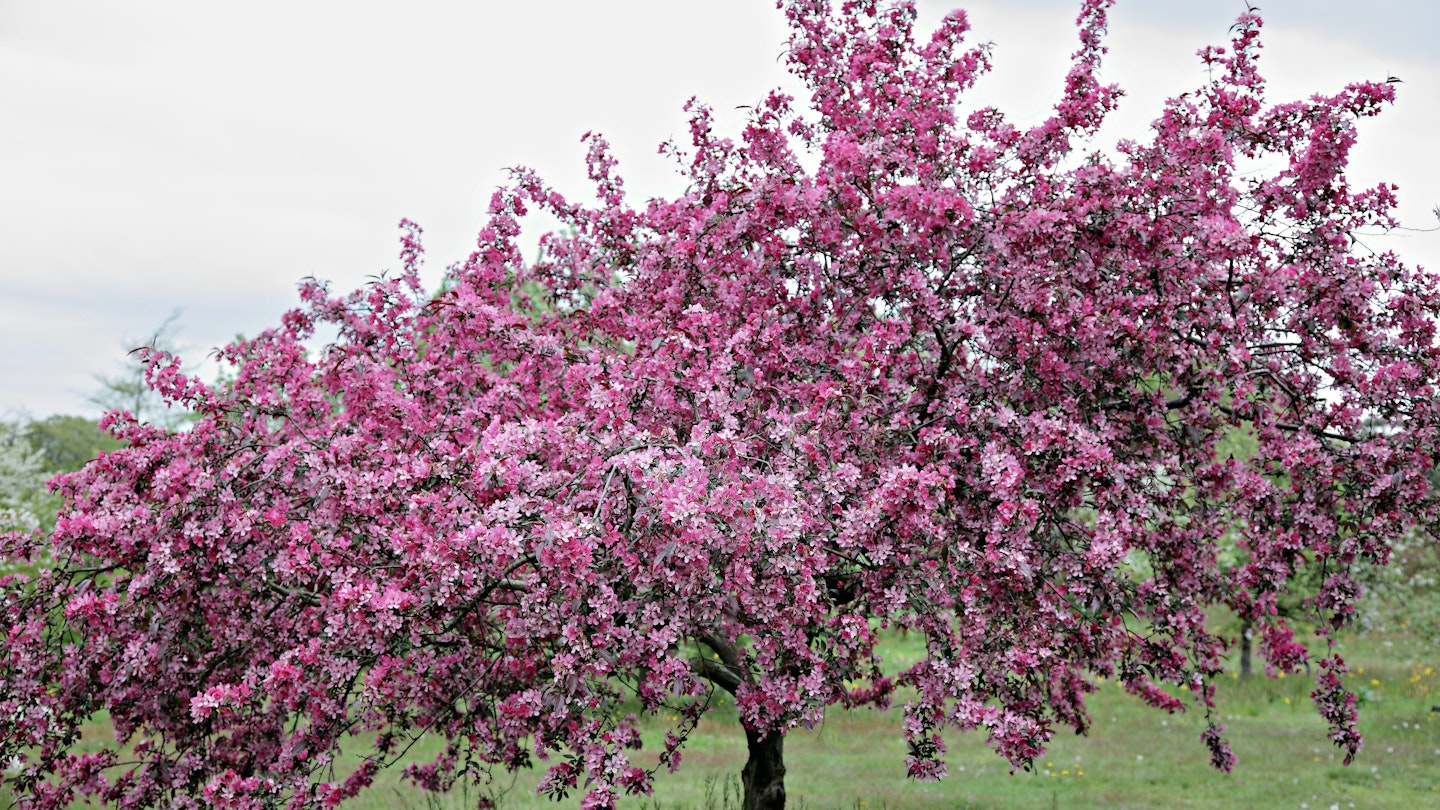Of all spring flowering trees, the crab apple is perhaps the most under-appreciated. While ornamental cherries grab most of the spotlight with their scene-stealing blizzards of blossom, most tend to grow rather too large for many gardens, and save for a little autumn colour, have little to give for the rest of the year. Crab apples are generally far more elegant, with a greater range of form and size thanks to careful selection and hybridisation between various species, making many ideal as specimen trees for smaller gardens or even larger patio tubs, particularly the dwarf varieties such as ‘Tina’ or “Adirondack’.
Crab apple is a generic term for a range of species and hybrids in the apple genus malus, largely based on fruit size and the fact they are used or bred for ornament rather than edible fruit. Fruit which are generally 5cm (2in) in diameter or less are classed as crabs. Most are sour tasting, although some, such as ‘Harry Baker’ have larger fruit which can be used in cookery, to make jams or jellies or in the case of ‘John Downie’ can be eaten raw.
However, it’s in spring when crab apples give their all, with branches wreathed in blossom that can be colourful in the pinker varieties, but generally understated in white or shell-pink, that is rather less chi-chi than some of the more flamboyant cherries.
Some commercial orchards deliberately plant crab apples among apple varieties to help improve fruit set.
Crab apples are easy to grow and generally tolerant of most soils as long as not too consistently wet or dry, although they will tolerate periods of drought once established. Many varieties are also resistant to apple diseases such as fire blight and scab, but you may still need to treat persistent infections. Most don’t need pruning, unless being thinned out or branches cut back to improve the shape. Although this can be done at any time of year, it’s best attempted when the flower display has finished in spring. As some varieties are grafted remove any shoots that appear from below ground or the graft point.
Fact: Most crab apples are self- fertile and act as effective pollinators for other cooking, cider and culinary apple varieties not self-fertile or only poorly so. Some commercial orchards deliberately plant crab apples among apple varieties to help improve fruit set.
Top varieties for the smaller garden
‘Van Eseltine’
Small, upright tree with semi-double, shell-pink flowers. Small yellow fruit. Good for pots.
H: 4m (13ft) S: 1.8m(6ft). From: www.mailordertrees.co.uk Tel 0800 066 5972
M. sargentii ‘Tina’
Dwarf tree with arching habit. Branches covered with small white flowers. Tiny red fruits. Disease resistant. Good for pots.
H/S 1.5m (5ft) From: www.chrisbowers.co.uk Tel 01366 386858
‘Harry Baker’
Elegant larger crab, with self-fertile dark pink blossom. Dark red edible fruits ideal for making jellies. Foliage flushed purple in spring.
H:6m (20ft) S: 4m (13ft) From: www.pomonafruits.co.uk 01255 440410
M. moerlandsii ‘Liset’
Red-pink flowering crab with a dense, compact habit. Leaves flushed purple in spring. Dark red cherry fruits.
H: 6m (20ft) S: 4m (13ft). From: www.mailordertrees.co.uk Tel 0800 066 5972
M. floribunda
Elegant species with arching habit producing masses of pale pink and white flowers. Small yellow fruits persist into winter.
H:5m(16ft) S:4m (13ft) From: www.ornamental-trees.co.uk Tel 01943 660870
‘Adirondack’
Compact, columnar crab with waxy white flowers from red buds. Small bronze-red fruit. Ideal for pots and narrow spaces.
H: 4m (13ft) S: 3m (10ft). From: www.crocus.co.uk Tel 01344 578111
